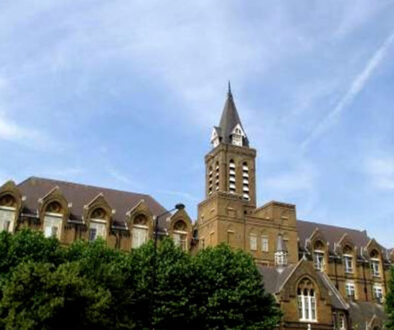Townsend Yard formal complaint.
The lengthy saga of the various applications relating to the construction of 7 houses continues and the Society is now of the view that this has been mishandled by Haringey. This has led to a formal complaint being submitted to David Joyce, Director of Housing, Regeneration and Planning for Haringey. The complaint breaks down into 5 areas as follows:
1. Failure to consider listed building application at the same time as the planning application. Listed Building Consent is required for the demolition of the grade 2 listed garages on the site attached to the grade 2 listed building, 36A High Street, also known as the Shepherd’s Cottage. This should have been submitted with the planning application to enable the listed buildings aspects of the application, in particular the impact on the setting of Shepherd’s Cottage, to be assessed. The Highgate Society and others alerted Haringey of the need for Listed Building Consent but this was ignored by the planning officers who made no reference to it in their report. This failure resulted in what some have argued is an unlawful granting of planning permission. This was belatedly recognised a year after the original approval and the Listed Building Consent Application is currently being dealt with, but in an unacceptably limited form.
2. Failure to require that the developer consult with local community in accordance with the NPPF. Extensive negotiation took place between Haringey’s planning officers and the developer’s agents at pre-application stage but at no time during this stage did the developer make contact with the local community, contrary to the requirements of Section 132 of the National Planning Policy Framework. In fact the developer has rebuffed approaches made to by the Society by a complete lack of response to requests to discuss the scheme.
3. Failure to refer controversial and sensitive scheme to committee in spite of numerous objections and high profile in community. This scheme has generated an exceptionally high number of objections and press coverage but the original scheme was decided by delegated powers in what one of the local Councilors stated was “…a serious error granting planning permission for this development. In my 8 years as a councilor the approval of that application has to be one of the worst planning decisions that the council has made in Highgate.” It is our experience that the norm in other boroughs is to consider applications for Planning Committee if a significant number of objections are received. To refuse to bring this to committee despite some 140 objections and requests from Councilors and the Highgate Society is unacceptable and affectively demonstrates Haringey’s contempt for the community.
4. Failure to mention the presence of the listed building, 36A High Street (Shepherd’s Cottage) by applicant, conservation officer and others and to address the harm which would be caused to the setting of this building. There appears to have been a significant error on Haringey’s side regarding the impact of the development on the setting of Shepherd’s Cottage. The planning approval allows one of the oldest buildings in Highgate to be completely surrounded by 2 and 3 storey buildings and thus become invisible from the public domain. Although an application for Listed Building Consent has now been submitted (approximately 1 year after approval of planning) this is limited to adjoining work and does not include demolition of the listed garages nor the setting of Shepherd’s Cottage. The objections, on behalf of the Highgate Society made by a leading planning barrister, and those from SAVE and SPAB make it very clear that the setting of the listed building must be a central consideration of this listed building application and that it would be a breach of NPPF guidance to do otherwise.
5. Failure to protect access for other users of the yard and for servicing and emergency services. The approved planning scheme is based on a row of terraced houses facing directly onto the narrow Townsend Yard . The only way for any vehicle to service these houses is by blocking the yard and the ability of emergency and large vehicles to turn within the yard was not accurately assessed. This means that for extended periods of time the users of properties further down the yard will not be able to access them and that large vehicles and emergency vehicles such as fire engines will need to reverse into the High Street. Access to Shepherds Cottage for fire engines is also now removed.
If this issue does not get satisfactorily resolved, the Society proposes to take the matter to the Ombudsman.




